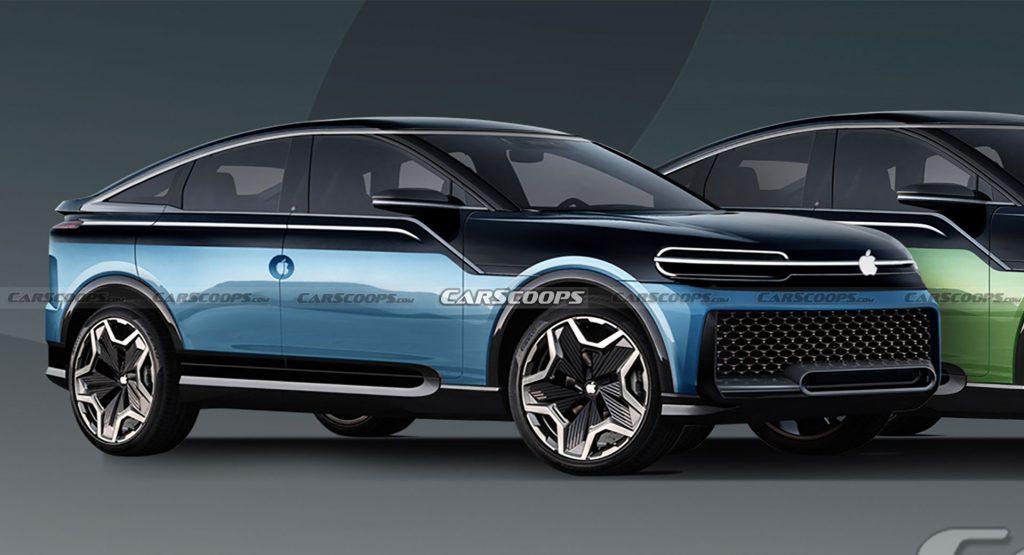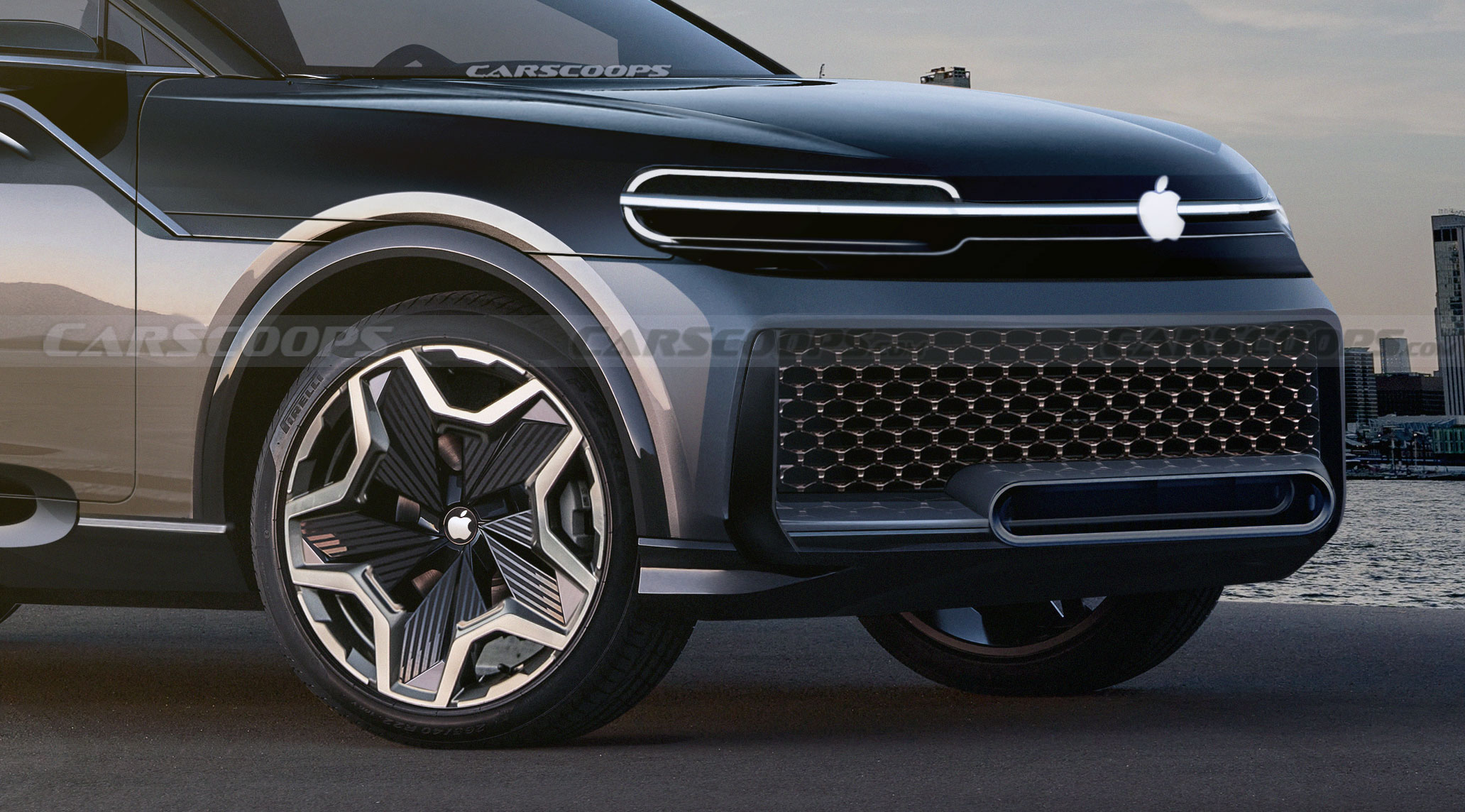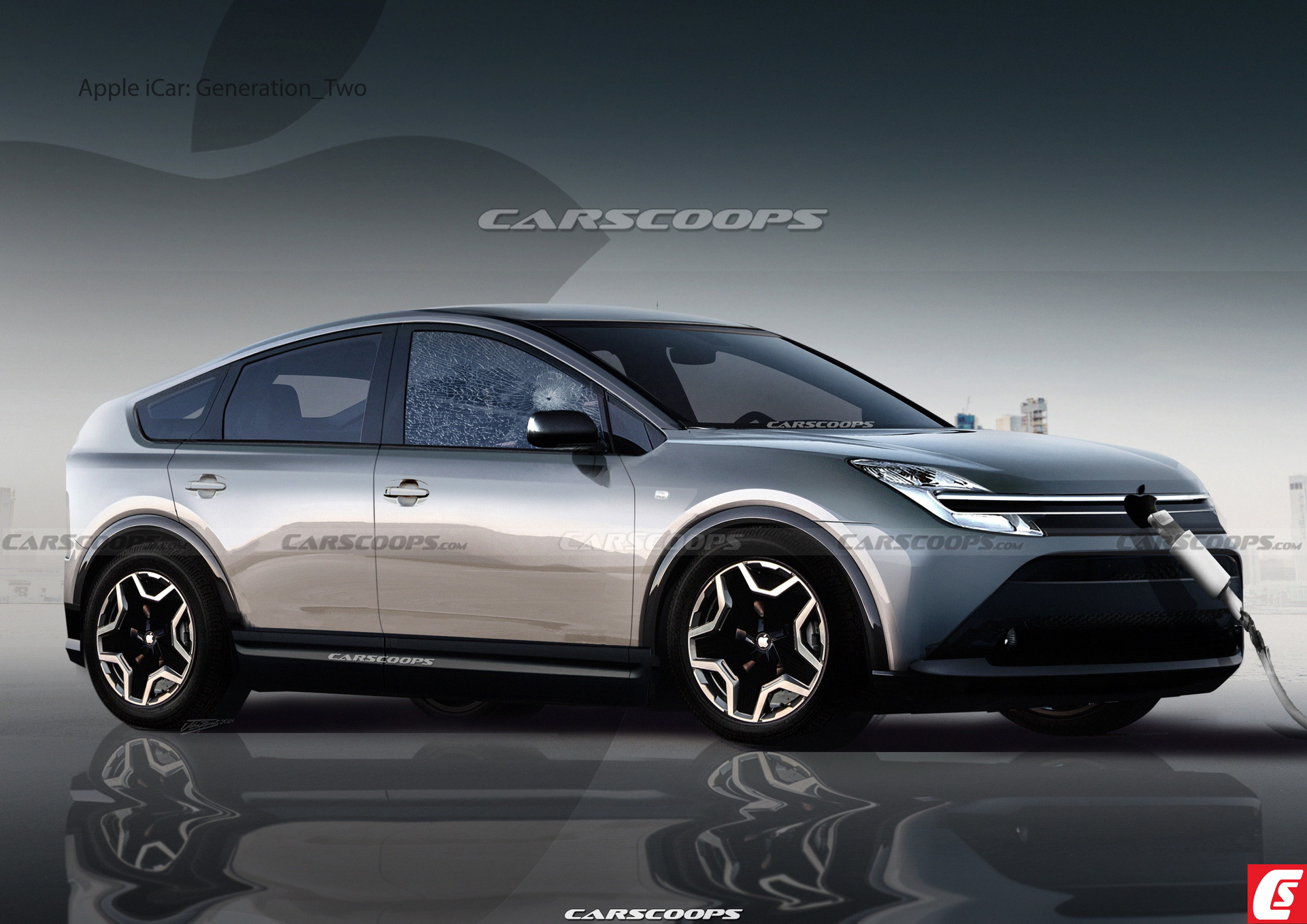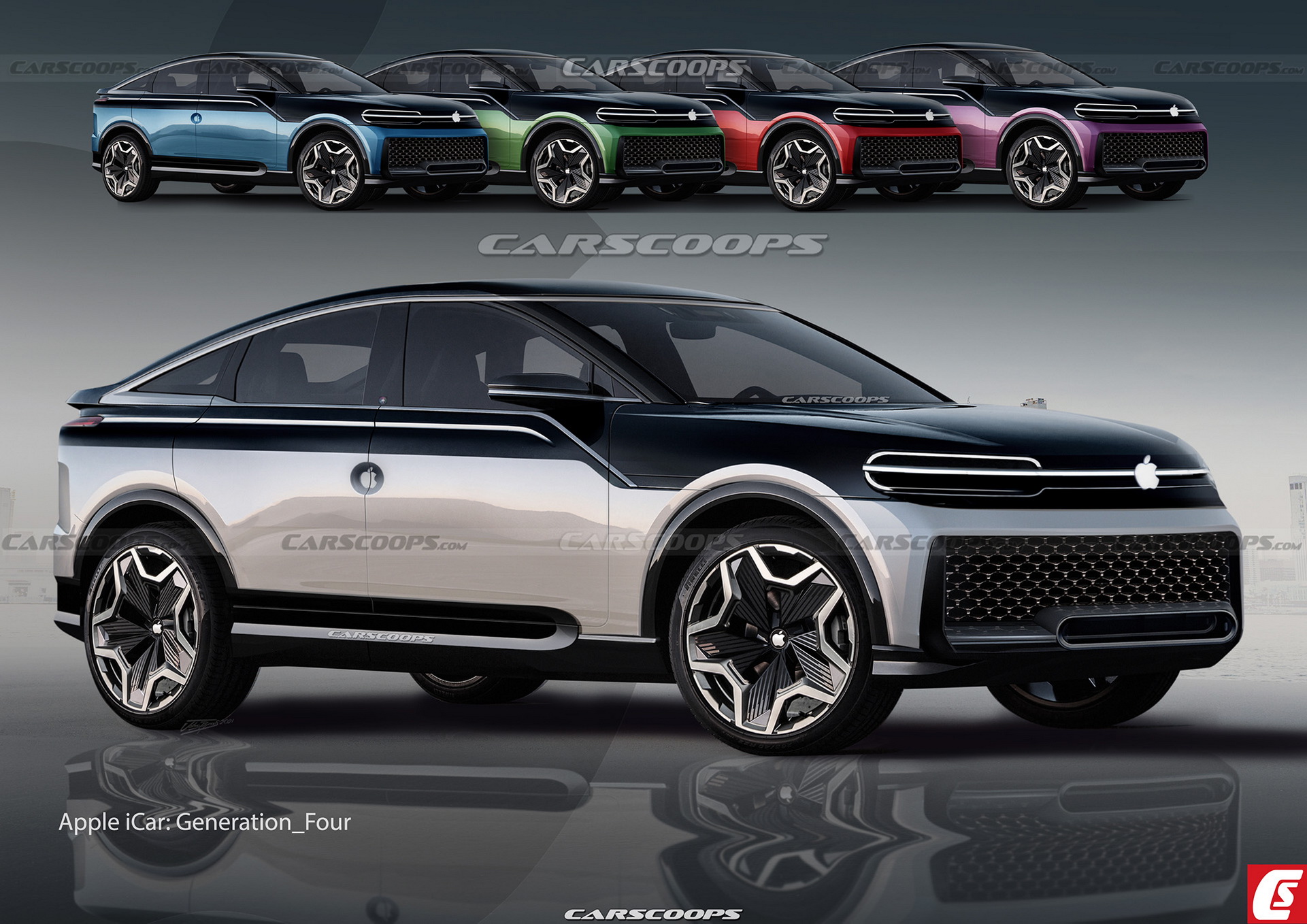Disclaimer: This article is a tongue-in-cheek, fanciful look at the history of the Apple iCar – if it were to exist. It also contains a speculative illustration made by CarScoops’ artist Josh Byrnes that is not related to or endorsed by Apple.
Recently we ran a story on Apple’s ‘Project Titan’ which, is believed to be the tech giant’s foray into the auto industry, along with a hypothetical illustration of the iCar itself. This got us thinking: what would the history of the iCar look like if its evolution followed other popular Apple products, chiefly the iPhone, but also its Mac lineup? Curiously intrigued? Hold onto your beers, and let’s creatively crystal ball-gaze at what might have been…
Generation One: The Genesis Of The iCar
Let your mind travel into the future and mid-June 2024. Welcome to WWDC, Apple’s Worldwide Developer Conference. The latest versions of iOS and MacOS alongside a few new hardware products have debuted with much fanfare, but Tim Cook ain’t done yet. Apple’s strongman used his keynote speech to formally confirm, after years, and years and years of rumors, the company’s decision to enter the automotive world, though he refrained from sharing or showing anything else.
Read: Imagining Apple’s Foray Into EVs With The iCar
Fast forward to September of the same year during a special event where Apple stunned the world with the iPhone 16SX, Tim Cook literally used a fan to blow the covers of a revolutionary approach to transportation. And its name? Following a familiar naming strategy, Apple’s electric vehicle will be called the iCar.
On sale April 1st, 2025 from the low price of $84,993 for the single motor version and $102,347 for the dual motor variant, the compact iCar hatch stunned everyone with its clean, simple looks and futuristic interior. Was it fast? Certainly not; its anemic 120-horsepower single electric motor and 200-horsepower dual setup can’t pull the skin off a jug of Kombucha, and the touchscreen interface constantly experienced Apple’s infamous spinning wheel of death. The interior also featured a 3.5” heads-up display, which, as owners later found out, was just a cradle to mirror your iPhone onto the windscreen.
Generation 2: Problematic Popularity
Launched simultaneously with the iPhone 17 in 2026, the second-generation iCar S showed that Apple wasn’t just going to lay down, bite the pillow and let others dominate the luxury scene. Looking exactly the same as before but armed with high-definition surround-view cameras and a 512 MB iOS operating system, the iCar S got a much-needed high-tech makeover. Aided by its silver and black appearance package, punters went nuts and bought a staggering 1.7 million of them in its first weekend on sale. Crazy!
Also Read: Everything We Think We Know About Alfa Romeo’s 2022 Baby Electric SUV
Unfortunately, that success had its price. Reports came flooding in that Bluetooth calls would drop – a fault discovered due to a rogue production line worker (ex Nokia) fitting the antenna to the steering wheel in what was called the “death grip”. Other issues included failing rear cameras, touchscreens turning urine yellow, and side glass which would break if occupants yodelled or listened to Friday by Rebecca Black.
Generation Three: Same Sausage, Different Lengths And A New Cheaper iCar SE
It’s 2027, Tim Cook has legally changed his name to Tim Apple and the new back-to-basics iMobi phone for emerging markets has gone big with 10 million sales in their first weekend. Enthralled with their success, Apple decides it’s time to expand the range with an affordable iCar SE that puts a more mundane body on top of the regular model while removing unnecessary amenities like touch door handles and all trim below the interior’s waste-line replacing it with either visible metal panels or plastic covers.
The regular iCar 3 has also grown – it is now a BMW iX5 sBattery ePower xDrive SEV (Sports Electric Vehicle) competitor offered in short and long-wheelbase formats (the latter is called the iCar Thicboi Plus). Interior interfaces now have 4K Retina displays, and an optical stabilization system improves handling.
However, the most significant change was the transition from single to a whopping three electric motors, two up front and one at the rear. Now battling the likes of Nissan’s Arya in terms of performance, the iCar received a 250 kWh lithium-ion battery pack. Frustratingly though, owners complained of poor battery life, and their vehicles would suddenly stop when the range dipped below 30 percent state of charge. This frequently happened in cold weather climates or when U2’s Songs Of Innocence kept playing on repeat. Other issues with vehicle charging were also reported; along with Apple’s native charging port being incompatible with all other charging stations, the factory-supplied onboard charger would often fray, electrifying many owners.
Generation Four: Wireless Charging And Different Colorways Are (Finally) Here
After Fraygate, Apple saw the error of its ways and finally introduced wireless battery charging with its 4th-gen iCar redesign, along with LiDAR-based autopilot and a much more premium look. For the first time, you could choose from a variety of colors. Siri external voice recognition for vehicle entry became standard, as did onboard 7G.
Critics, however, weren’t impressed. They criticized Apple over the pricing of accessories like larger 19 inch alloy wheels costing $4,000 a pop and the necessary yet optional charging mat priced at $10,199, as well as non-Apple phones being blocked from connecting to the in-car infotainment system. Worst of all, the instrument cluster periodically gave drivers seizures with flashing glimpses of Tim Apple’s glasses and toothy smile. On the upside, buyers could finally order the iCar in different hues and with a triple camera system developed in conjunction with Philips.
So was this alternative history worthy of reality, or thought gone too far? Feel free to join in on the light-hearted discussion in the comments below.













